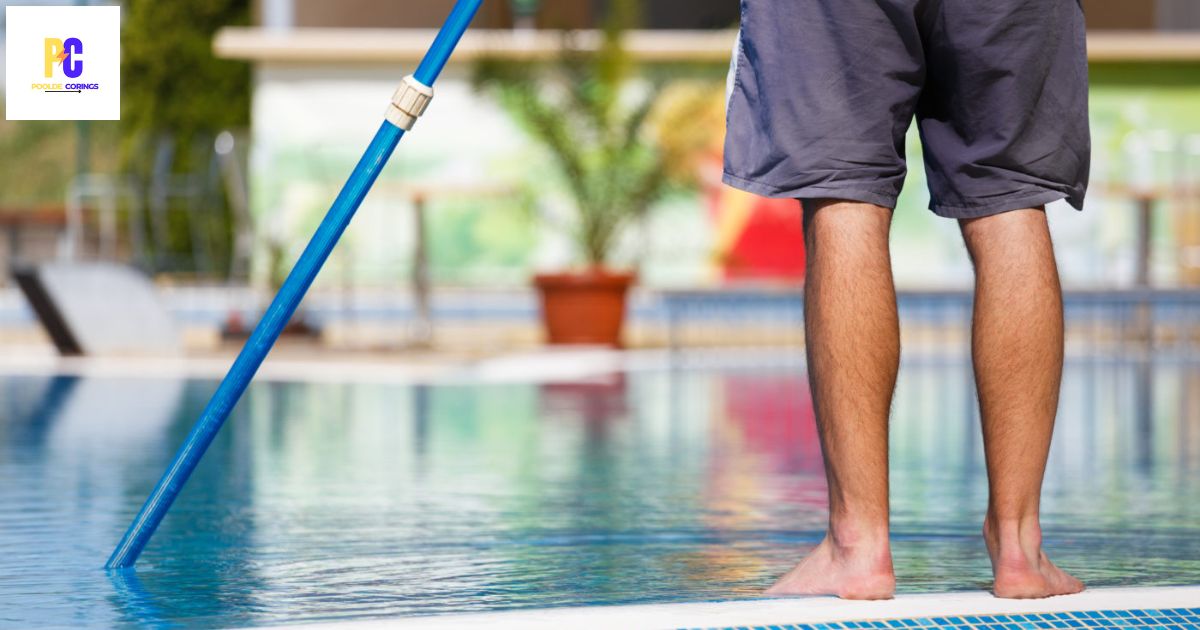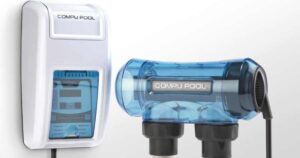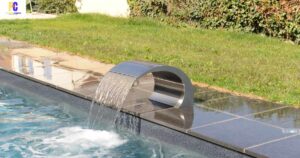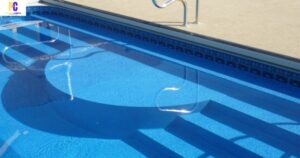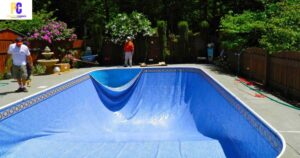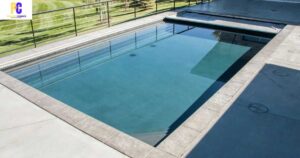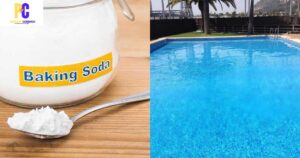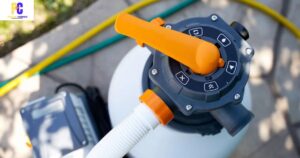Unclogging a pool line refers to the process of removing blockages or debris from the pipes that circulate water in a swimming pool. This task is essential to maintain proper water flow and filtration, ensuring the pool functions efficiently. Regular unclogging prevents water stagnation and helps in maintaining clean and clear pool water.
Is your pool water circulation slowing down, leaving you frustrated? Discover the simple yet effective solution to your problem – learn how to unclog a pool line! Dive into our easy step-by-step guide and say goodbye to stagnant water. Take charge of your pool’s health today!
Learning how to unclog a pool line is essential for pool maintenance. It involves clearing any blockages or debris in the pipes to ensure proper water circulation. By following simple steps and using appropriate tools, you can keep your pool water flowing smoothly, preventing issues like stagnant water and inefficient filtration.
Understanding the Importance of Clear Pool Lines
Clear pool lines are the lifelines of a healthy swimming pool. Proper water circulation, facilitated by unclogged pipes, ensures efficient filtration, chemical distribution, and overall pool hygiene. Understanding the importance of clear pool lines is crucial for maintaining crystal-clear water, preventing stagnation, and enjoying a refreshing swimming experience.
Regularly clearing pool lines also extends the lifespan of pool equipment and reduces the risk of costly repairs. By keeping the lines free from debris and blockages, pool owners can enjoy hassle-free maintenance and ensure a safe, inviting environment for everyone using the pool.
Ensuring Efficient Water Circulation for a Healthy Pool
Ensuring efficient water circulation is crucial for maintaining a healthy pool. Proper circulation helps distribute chemicals evenly, prevents algae growth, and ensures effective filtration, resulting in crystal-clear water that’s safe for swimming. Regularly unclogging pool lines and maintaining the filtration system are essential steps to guarantee a refreshing and enjoyable pool experience for everyone.
Identifying Common Pool Line Blockages
Identifying common pool line blockages is crucial for maintaining a properly functioning swimming pool. Debris, algae, and other contaminants can hinder water flow, leading to issues like poor filtration and stagnant water. By understanding these typical blockages, pool owners can take proactive measures to prevent clogs, ensuring crystal-clear water and a more enjoyable swimming experience.
Regular inspection and awareness of common pool line blockages empower pool owners to address issues promptly. By staying vigilant and proactive, pool enthusiasts can preserve the efficiency of their pool systems, ensuring clean and refreshing swimming conditions for everyone to enjoy.
Debris, Algae, and Other Culprits: What’s Clogging Your Pipes?
In the world of pool maintenance, understanding the culprits behind clogged pipes is crucial. Debris, algae, and other unwanted particles can obstruct your pool lines, disrupting water flow and filtration. Identifying these common offenders is the first step towards efficient cleaning, ensuring your pool stays crystal clear and inviting for a refreshing swim.
Essential Tools and Equipment for Unclogging
Clearing a clogged pool line requires the right tools and equipment to ensure effective results. Here’s a helpful table outlining the essential tools you’ll need
| Tools and Equipment | Description |
| Plumbing Snake | A flexible metal tool to dislodge and remove stubborn clogs deep within the pipes. |
| Pipe Auger | Specifically designed for navigating curved pipes, ideal for breaking up blockages in hard-to-reach areas. |
| Chemical Cleaners | Specialized chemicals that dissolve organic debris and algae, clearing the lines for improved water flow. |
| Wet/Dry Vacuum | Powerful suction device capable of removing water and debris from clogged pipes. Helps in clearing minor blockages. |
| Safety Gloves | Rubber or latex gloves to protect your hands from chemicals and potential debris while working on unclogging the pool lines. |
Having these tools on hand will make the unclogging process more efficient and manageable, ensuring your pool’s circulation system functions smoothly.
Additionally, a pipe wrench and Teflon tape are useful for tightening and sealing pipe connections, preventing leaks once the unclogging process is complete. Proper safety goggles are also essential to protect your eyes from splashes and ensure a secure unclogging experience.
From Snakes to Chemical Cleaners: Choosing the Right Tools
When it comes to unclogging a pool line, selecting the appropriate tools is crucial for a successful outcome. Snakes, designed to navigate pipes, and chemical cleaners tailored for breaking down blockages, offer effective options. Understanding the specific issue and choosing the right tool ensures a hassle-free experience, restoring proper water circulation in your pool.
Step-by-Step Guide: How to Unclog Your Pool Line

Unclog your pool lines with these easy steps
- Turn off the pool pump.
- Locate the clog.
- Insert a drain cleaning bladder into the clogged line.
- Turn on the water and let the bladder expand.
- Watch for debris to be dislodged and pushed out of the line.
- Once the clog is cleared, turn off the water and remove the bladder.
- Turn on the pool pump and test the water flow.
Whether you’re dealing with debris, algae, or other blockages, this guide provides practical solutions for every pool owner. By following these steps, you can maintain a healthy and efficiently functioning pool, ensuring enjoyable and refreshing swimming experiences for everyone.
Easy DIY Methods to Restore Proper Water Flow
In this article, you’ll find straightforward DIY methods that can help you restore proper water flow in your pool. These easy techniques, accompanied by simple step-by-step instructions, empower you to tackle pool line clogs effectively, ensuring your pool functions smoothly and stays crystal clear.
Preventive Measures and Regular Maintenance
Regular maintenance is the key to preventing pool line clogs. By skimming the water surface daily, cleaning out skimmer baskets, and using pool covers when the pool is not in use, you can minimize debris accumulation. Additionally, scheduling routine professional inspections ensures early detection of potential issues, allowing you to address them before they turn into costly problems, and keeps your pool lines clear and functioning smoothly.
Consistent chemical balancing and proper filtration also play vital roles in preventive maintenance. Regularly testing and adjusting the pool water chemistry, along with cleaning or replacing filters as needed, ensures optimal conditions and reduces the risk of clogs, keeping your pool lines trouble-free year-round.
Tips to Keep Your Pool Lines Clear and Trouble-Free
To maintain clear and trouble-free pool lines, regular upkeep is key. Firstly, skimming the pool surface daily, using a pool cover, and ensuring proper chemical balance can prevent debris accumulation. Additionally, scheduling routine professional inspections and cleaning sessions can identify issues early, ensuring your pool lines stay clear and your swimming experience remains enjoyable.
FAQ,s
Why is it important to unclog a pool line?
Unclogging a pool line is crucial to maintain proper water circulation, ensuring the pool functions efficiently and the water remains clean and clear
What are some common signs of a clogged pool line?
Signs include reduced water flow, air bubbles in the pool, and unusual water discoloration. These indicate potential clogs in the pool lines.
Can I unclog a pool line myself?
Yes, you can. There are DIY methods using tools like snakes and chemical cleaners. However, it’s essential to follow safety guidelines and, if unsure, seek professional assistance.
What preventive measures can I take to avoid pool line clogs?
Regularly skimming the pool, using a cover when not in use, and maintaining proper chemical balance can prevent debris accumulation, reducing the risk of pool line clogs.
How often should I inspect and clean my pool lines?
Regular inspections should be done monthly, with cleaning sessions scheduled at least once every six months. However, if you notice any signs of clogging, it’s best to address the issue promptly
Conclusion
Understanding how to unclog a pool line is essential for every pool owner. By applying the right techniques and using appropriate tools, you can ensure the proper flow of water in your pool, promoting efficient filtration and maintaining a clean swimming environment.
Regular maintenance, preventive measures, and timely unclogging efforts will not only prolong the lifespan of your pool equipment but also enhance your overall pool experience. Don’t let clogged pool lines dampen your enjoyment; take charge, follow the necessary steps, and keep your pool lines in proper condition for a refreshing and trouble-free swim se
